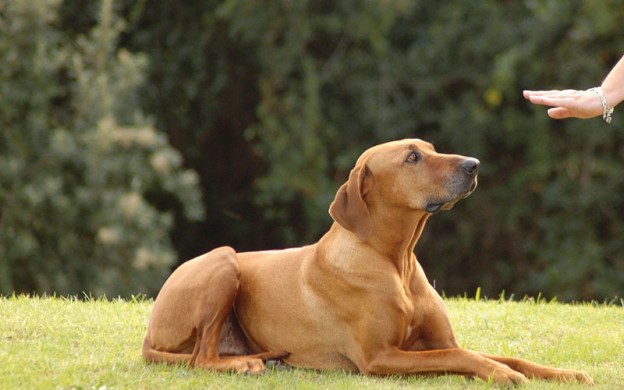
Sometimes our furry friends get into troubling situations, such as running across the road or eating something they shouldn’t. Dog behaviour expert Laura Vissaritis provides advice on how to keep your dog safe.
Our dogs depend on us much like a toddler does. The main difference is that dogs never grow up. They depend on us for food, water, shelter, companionship and safety their entire lives. To keep our dogs safe, sometimes they need to understand that, in this unpredictable world, there need to be boundaries. Boundaries are so important because dogs don’t understand the world we live in and, if there are no guidelines for safety, then our dogs can find themselves in all sorts of danger.
Be clear and consistent
The word “no” is just a conditioned response that is supposed to communicate that there is a threat or that something is off limits. You can use the word “no”, or some people prefer cues such as “leave it”, or “away”. Whatever you decide for your dog, ensure it is consistent and that it has meaning. In addition, it is just as important to teach your dog a release word such as “free” or “okay”. A release word lets your dog know that they no longer need to do that behaviour. Without this word, dogs can become confused, and not understand what it is you want from them. Remember, dogs need clear and consistent guidance. A release word helps to clarify what you are communicating.
To teach your dog the importance of “no”, you don’t need to punish your dog, yell at them or cause harm. In fact, as we come to understand the science of learning and behaviour in our beloved pets more and more, these sorts of methods are increasingly condemned.
Instead of punishment, behaviourists like me give people the skills to help their dog understand boundaries by giving the dog a better and safer option at the time. For example, if you want to teach your dog not to take food or items from the ground or other surfaces, teach them that sacrificing that small bit of food and focusing on you instead results in not only your being able to take that food, but also their being thanked with more food and praise immediately after.
Control the situation
The best way to teach your dog this sort of self-control is to set both you and them up for success. By this, I mean put your dog on a lead. If your dog is off lead during initial training sessions, you set yourselves up for confusion and a lack of control, resulting in frustration. Training should be fun! If you or your dog are not enjoying the session, stop and have a break. Ideally, training sessions don’t last more than a couple of minutes at a time.
Once your dog is on lead, throw a bit of food where they can see it, but can’t reach it. He will try to go and take it but as he realises he can’t get to it, gently say “no”. When he stops and thinks, making a decision to look to you and sit, then take him to the treat saying “okay” and give him three more from your hand with praise. You are teaching your dog such a wonderful skill and it is called “impulse control”. Dogs need to feel some sense of control in this unpredictable world. If they don’t have control and don’t trust their owner with it, then we run into a range of behavioural complications such as pulling in lead, jumping up, lunging on lead, etc.
Make sure your furry friend is always looked after at our DOGSLife Directory



